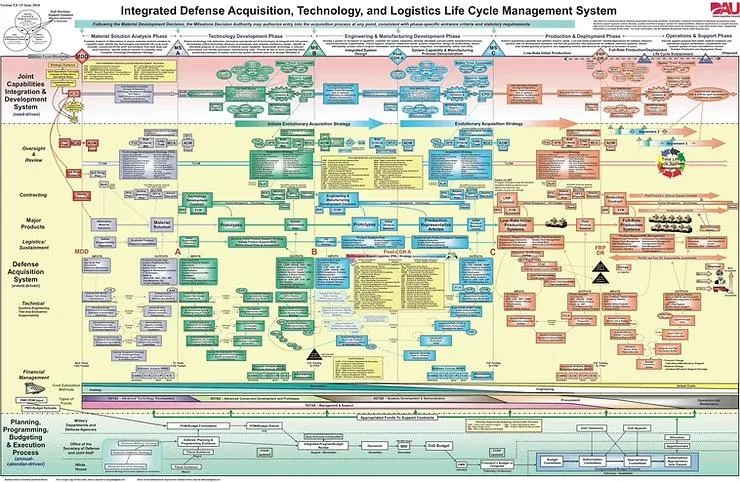2-SECOND BURSTS
SHORT THOUGHTS ON LEADERSHIP, DECISION-MAKING, FLIGHT, AND OTHER TOPICS OF THE DAY
ARTICLES

DoD Requirements Are Broken
Everything beyond toilet paper and televisions for the DoD is significantly overpriced. Probably even those simple commodities cost enough to anger a taxpayer. It's not because the market encounters a Defense contracting officer and sees an opportunity to fleece the taxpayer, as if often depicted. It's also not because of the exquisite nature of everything the military needs, or that everything the military uses is so unique that they can't find what they need at the local Dollar General. It is also not because government workers revel about their home in a cost center and could care less about the price of what they buy. The need-to-procurement cycle is indeed broken. In fact, it never worked, and we the taxpayer have born the brunt of the pain, right beside the warfighter wondering why their urgent mission needs have taken 18 months just to get an audience amongst bureaucrats putting ideas from Stack A to either the round filing bin or the "good idea to discuss next" pile.
The requirements process is born out of a need for government accountability and congressional oversight. I appreciate the desire to protect my money and field only what our forces need, but the system is so cumbersome that even clear definitions of need take months, even years to staff, materially-define and fund. Unacceptable. By the time of final fielding, the staffed requirement often does not even look like the conceptualized idea of the warfighter when he/she was dreaming of how better to do their job. In a nutshell, here are the main issues:
Colors of money. The DoD budget is broken into different applications for funds, which administratively helps bin requirements, but often causes budgetary contortions and product obfuscation to use the available funds instead of the correct funds. $Billions are wasted trying to dance around a solution instead of going direct to the solution because it would cause a change it the required color of money.
Focus on tech instead of what the warfighter asked for. The F-35 helmet is a perfect example. We literally spent $Billions on a helmet that does not meet the REQUIRED operational capabilities because the technical solution clouded the process. All when an off-the-shelf solution existed and was flying on multiple military aircraft for literal pennies. The helmet--instead of accurate finding, fixing and targeting--became the "requirement."
Ignores the commercial market. The requirements process assumes no tactics or accommodations can be used to buy COTS items that with those inputs can meet the requirement. The answer is either "Material Solution" or "Change how you do things." No in-between.
Lack of warfighter involvement start to finish. The budgeteers and engineers quickly grab hold of a "requirement", define a solution solution that is often not what the warfighter envisioned. It looks like the secret game you used to play in elementary school where you tried to whisper a secret from one end of the room to the other while maintaining the same storyline. Never works.
Budgetary thresholds for approval and decision-making consolidation at the Pentagon. Functional commanders, even Title X agent commanders responsible for certain mission sets, have limited/no say on what they field. Results, because of the risk-averse staffing requirements, are consensus-driven.
Overly prescriptive. This is the 9,000-mile screwdriver dictating technical requirements to a ridiculous level.
Did I say too slow and inflexible? They are slow and inflexible.
At this point, nothing short of a bull of a president who breaks major glass or a major war where our very existence is in question will make a dent in this. I hate to be the naysayer or doomsday preacher, but there is not enough leadership in Washington on its 2-year cycles that can make the shift. But in case anyone is listening, I'll next share a few ideas to move the needle a little.

CONTACT DEREK!

MEDIA INQUIRIES
Members of the press are welcome to contact us regarding any requests at [email protected] ;
(385) 777-6285

